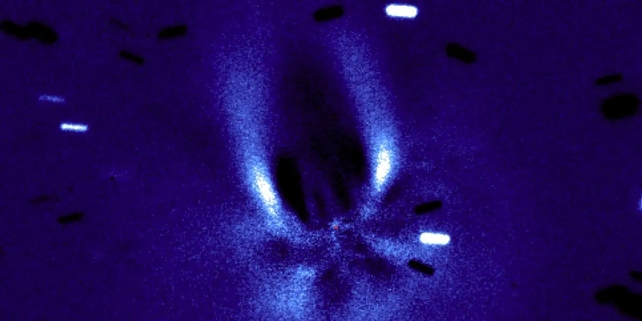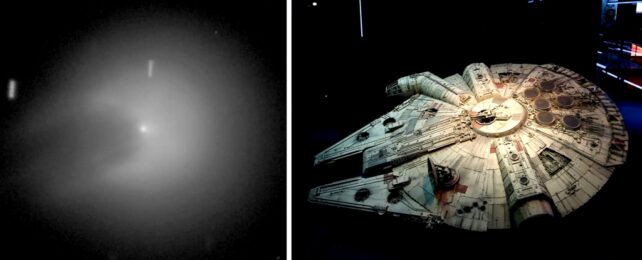Astronomers have spotted a "once-in-a-lifetime" comet shaped like the Millennium Falcon – and sky gazers may soon be able to see it for themselves without a telescope.
The comet, known as Comet 12P/Pons-Brooks, abruptly brightened 100-fold on July 20 as plumes of debris and ice were blasted off it into space.
This gave it a horseshoe shape, which scientists likened to the Millennium Falcon spaceship from "Star Wars."
The comet will make its closest approach to the sun next year, passing about 144 million miles from our planet on June 2, 2024.

What makes the event even more exciting is that its approach will come just weeks after North America's total solar eclipse on April 8, 2024.
"It's once-in-a-blue-moon that you see a comet next to an eclipsed sun," Richard Miles of the British Astronomical Association told Insider.
While it may be possible to see the comet with the naked eye, Miles advised using binoculars. "It should be visible, it's guaranteed to get a lot brighter, just in the normal way all comets get a lot brighter.
"What it could also do is have an outburst during the eclipse," he said.
A decades-old mystery
Astronomers aren't sure exactly why Comet 12P/Pons-Brooks, which orbits the sun every 71 years, has brightened so drastically in recent weeks.
Miles said there may be an active ice volcano on the surface that is causing it to light up the sky.
"It's something of a revolutionary idea that you have liquid inside a comet and scientists have for decades never really come to terms with it," he said.
"When you see this comet do what it's doing, you can't really explain it without saying 'As well as solids and gases, there are liquids inside the comet making it behave in this very unusual way,'" he added.
The discovery helps back up a theory that comets not only brought water to Earth but also helped spread the germs of life on our planet, Miles said.
"Comets come from the Oort cloud which is far beyond the orbit of Neptune and Uranus," Dr Edward Gomez of the Las Cumbres Observatory in Cardiff, Wales told Insider.
"It's all the stuff which is left over from when the solar system was made. Everything that formed into planets has been evolving for 4.5 Billion years (e.g. through geophysical processes and weather) but the Oort cloud is pristine. It gives us a great snapshot of what conditions were like when the planets formed and how the planets formed."
Comet 12P/Pons-Brooks' outburst was discovered on July 20 by Elek Tamás of Harsona Observatory, Nyiregyhaza, Hungary. It was later captured by members of the Comet Chasers education and outreach project led by Helen Usher of Cardiff/Open University in the UK, using the Faulkes Telescope.
The comet has likely streamed 10 billion kilograms of dust and ice into space, according to Carrie Holt of the University of Maryland, speaking to Scientific American.
While most people will have to wait until next year to see the comet, amateur astronomers could be in with a chance of seeing it now using a six-inch telescope and pointing it to the constellation of Draco in the Northern Sky.
"At the moment it is only really visible with a telescope at a nice dark site but around the time of the eclipse next April, it will be bright enough to easily find with a pair of binoculars from your back garden, even if you live in suburbs," said Gomez.
This article was originally published by Business Insider.
More from Business Insider: